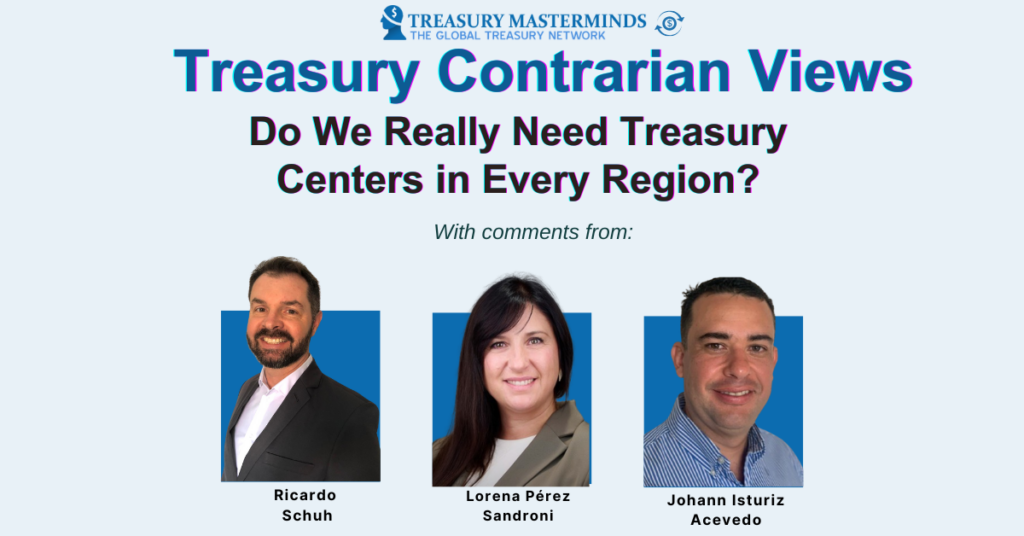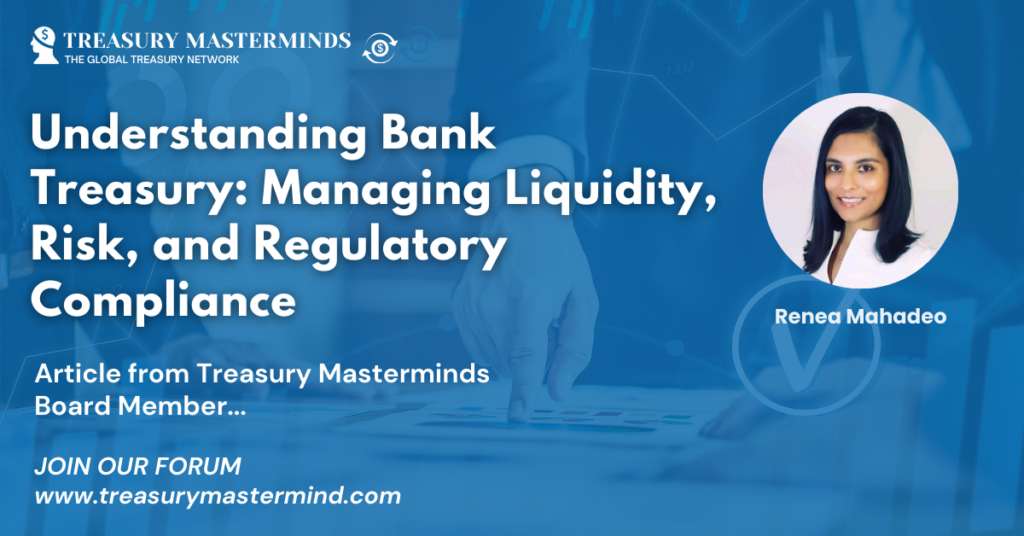
Are My Business’s FX Rates and Margins Fair?
This article is a contribution from our content partner, Just “Are my FX rates and margins fair?” As a corporate treasurer, this is an important question to ask. But due to a lack of transparency around market data, obscure bank jargon, and opaque trading processes, it’s not an easy question to answer. Without access to accurate, real-time market data, it’s very difficult to get a clear picture of business FX rates. Banks understand this obscurity and use it to their advantage, meaning that the answer to the question is most likely no, your business FX rates and margins aren’t fair. Rates are driven primarily by market conditions, which puts them outside of businesses’ and banks’ control. However, the margins added on top of rates are within the banks’ control. But you can’t know what a fair margin looks like unless you have the data to understand and benchmark ‘fair’ in the first place. Thankfully, this is now possible. New FX tools are giving businesses visibility into market data, equipping them with the information they need to understand what their banks are really charging—and enabling them to do something about it. What influences rates and margins? First, it’s important to recognise the difference between rates and margins. Rates are the market price at which one currency is exchanged for another: the rate of exchange. These are influenced by a range of external factors out of a business’s control, including: An FX margin, on the other hand, is the amount your bank adds on top of the trade. This is what they charge you for facilitating the trade. But the margins themselves are often hidden or, at least, unclear in how they’ve been calculated. Margins are influenced by factors including: This doesn’t mean, however, that margins are entirely subjective. They needn’t be wildly inconsistent from bank to bank. While rates can change, the margin banks charge is within their control. And that means it’s in your business’ control, too. Why your business’s FX margins probably aren’t fair Trading foreign currencies has inherent risk, which means businesses and banks are looking for ways to reduce it. For banks, charging margins is a way to hedge against risk. The higher the perceived risk, the higher the margin; the lower the perceived risk, the lower the margin. For banks, relatively illiquid currency pairs represent a higher risk, as do forward contracts with long tenors. In these trades, the bank will levy a higher margin to cover themselves. The company’s credit profile is also relevant to the bank. But mitigating against risk is one thing, charging an unfair margin is another. The fairness aspect comes in how big that margin should be. And, at the moment, banks can charge pretty much whatever they want — unless a company challenges those margins. How does this happen? Lack of transparency This is perhaps the biggest issue with unfair business FX rates and margins. When you submit a trade, your bank provides you with a quote, inclusive of all costs. But beyond that, visibility into what they’re charging or why is limited. This makes it impossible to see what the trade would actually cost based on the currency rates alone — and what margin your bank is charging on top of that. It’s complicated FX trading is full of jargon and insider “conventions” — the industry rules that have built up over time. These conventions govern, for example, how currencies are quoted, the complex maths behind those quotes, the rules of trading and when traded currencies can or cannot settle. But many companies and treasurers aren’t familiar with these complex and often opaque practices, putting them at a disadvantage when trying to negotiate lower margins. This is why it’s invaluable to have a tool that navigates these rules and makes margin analysis straightforward for companies and their treasurers. A lack of access to real-time data Businesses typically don’t have access to the data that banks use to generate their quotes, putting them at a significant disadvantage. It’s virtually impossible to negotiate better margins if you don’t know exactly what you are negotiating, let alone understand if what you’re being charged is fair or not. Even if you don’t want to negotiate, access to live data on trade currencies lets you understand what’s going on in the market, helping inform your FX strategies. Other factors that impact margins Flow size Your bank might also be charging you different margins depending on the size of your flow — your annual trade volumes. The bigger your annual trade volumes, the more likely it is that your bank (or banks) will keep a tighter rein on your margins because they are incentivised to keep access to that flow. Companies that trade over 100 million USD, for example, can use the leverage of their flow size to negotiate with their bank and keep margins low. Companies with smaller trade volumes might need to work harder, and negotiate savvier, with their bank in order to bring their margins down. Company credit and service profile If you’re a smaller business with less credit or a bigger business with credit risk, or if you depend heavily on your bank for other key services, you’re likely to have less leverage when it comes to asking for lower margins, even though the SME sector forms 21% of the total international payments market.² Established businesses with good credit, however, will find themselves in a stronger position to negotiate — or might be receiving lower margins in the first place. Get fairer margins and better visibility over rates Unfair margins aren’t inevitable. By understanding how to benchmark your trades using real-time rates from the interbank market, tailored to the tenor of your trade, companies can see the margins their banks are taking. Getting to grips with this gives companies the information they need to start a conversation with their bank. Benchmark your FX trades First, this means using an FX benchmarking tool. Thanks to a new generation of FX tools, treasurers now…

AI in Treasury: Artificial Intelligence or Augmented Intelligence?
Written by Patrick Kunz Artificial Intelligence (AI) has become a buzzword across industries, and treasury management is no exception. However, there’s an important distinction to be made when discussing AI in the context of treasury: Is it truly Artificial Intelligence, or is it more about Augmented Intelligence? AI Will Not Replace You – It Will Enhance You One of the most common fears surrounding AI is that it will replace jobs, making human professionals obsolete. In treasury, this concern is understandable. With AI’s rapid advancement, it might seem like machines could eventually take over tasks like cash forecasting, liquidity management, and financial risk assessment. The truth, however, is that AI in treasury is designed not to replace professionals but to augment their capabilities. It’s not about machines replacing humans but about empowering them with faster, more accurate decision-making tools. The Role of AI in Improving Processes Rather than automating treasury functions completely, AI enhances existing processes by increasing efficiency and accuracy. In areas like cash management and financial reporting, AI algorithms can quickly analyze vast amounts of data and offer real-time insights. This allows treasurers to make better, data-driven decisions and free up time to focus on strategy and value-added tasks. For example, AI can significantly improve cash forecasting by identifying trends and patterns that might go unnoticed by human analysis. It can process large datasets in seconds, allowing treasury teams to make faster decisions and act proactively rather than reactively. WEBINAR ALERT: Fighting Fraud in 2025: Are You Ready for the Next Generation of Threats? Over 70% of businesses have experienced fraud attempts, and the financial impact continues to rise. As fraud tactics become more sophisticated, relying on outdated prevention strategies simply isn’t enough. Join Tom A. (Senior Fraud Consultant UK at Trustpair) and our very own Royston Da Costa (Assistant Treasurer at Ferguson PLC) on February 20, 2025, at 11:00 AM for an essential webinar that will equip you with the latest insights and strategies to protect your organization from evolving AI-driven fraud threats. Moderated by Patrick Kunz, FRM QT What you’ll learn: This session is tailored for finance professionals, treasury leaders, and risk managers who want to stay ahead of fraud risks. Real-Life Examples of AI in Treasury Here are a few examples from major corporations that showcase the power of AI in augmenting treasury processes: Speed and Accuracy In treasury, where accuracy is paramount, AI can play a crucial role in reducing human error and streamlining operations. By automating repetitive tasks like transaction categorization, reconciliation, and monitoring of financial exposures, AI can not only reduce errors but also speed up these processes. With faster and more accurate data analysis, treasury professionals can optimize cash management, hedge risks more effectively, and identify opportunities for cost-saving or investment more efficiently. The Bottom Line: AI as a Collaborative Tool Ultimately, AI in treasury is a tool to enhance human expertise. It’s about creating smarter, more efficient teams rather than replacing jobs. Treasury professionals will continue to play a critical role in making strategic decisions, interpreting data, and navigating the complexities of financial markets. AI, however, will allow them to work smarter, not harder. The future of AI in treasury is less about replacing human jobs and more about enabling treasury teams to unlock their full potential. By leveraging AI to automate mundane tasks and improve decision-making, treasury professionals can deliver greater value to their organizations. Also Read Join our Treasury Community Treasury Mastermind is a community of professionals working in treasury management or those interested in learning more about various topics related to treasury management, including cash management, foreign exchange management, and payments. To register and connect with Treasury professionals, click [HERE] or fill out the form below to get more information. Notice: JavaScript is required for this content.

How to Automate ‘Cash Pooling’
This article is written by Embat Cash pooling is a highly beneficial tool for companies within their cash management practices. However, it often becomes a significant challenge for treasury departments due to its complex implementation, especially when done manually, which requires considerable human intervention. Fortunately, modern technology provides effective solutions to automate cash pooling, making its management much more efficient and streamlined. What is cash pooling and what is its purpose? Cash pooling is a technique used by companies to optimise their treasury management, particularly in groups with subsidiaries or branches, whether domestically or abroad. Essentially, it involves consolidating the balances of all the bank accounts belonging to the various entities of a company into a single master account. This provides a comprehensive view of cash flow, enabling more informed decisions regarding the use of available funds. This procedure allows companies to maximise treasury efficiency, reduce the costs associated with banking operations, and improve financial risk management. Additionally, by centralising funds into a single account, companies can decrease the need for external financing and better seize investment opportunities. In general, this technique is advantageous for companies that maintain multiple bank accounts across various institutions, and it becomes even more efficient when those branches are located in different countries. JOIN TREASURY MASTERMINDS Cash pooling: a practical example To better understand how cash pooling works, let’s look at a practical example. Imagine a corporate group made up of three different companies, each with distinct business dynamics. Company A, due to its operations, maintains negative balances. As a result, its account shows a debt of €200,000. In contrast, companies B and C have positive balances in their bank accounts of €300,000 and €500,000, respectively. Therefore, the corporate group has a total positive bank balance of €600,000. Thanks to cash pooling, the balances of the three companies are unified into a single bank account, resulting in a consolidated balance of €600,000. In effect, companies B and C have financed company A, allowing it to avoid resorting to external financing to achieve a positive balance. Thus, company A will incur much lower interest rates than it would have if it had turned to external financing (and, of course, lower than what it would pay on the overdraft of its bank account), thanks to the financing provided by companies B and C. Additionally, cash pooling allows companies B and C to obtain higher returns from company A than if they had simply deposited their funds into a bank account. Types of cash pooling Broadly speaking, there are three main types of cash pooling: Advantages and disadvantages of cash pooling The primary benefits of utilising this technique include: On the downside, some of the disadvantages of cash pooling are: How to automate cash pooling? If you are wondering whether it’s possible to automate such a critical treasury process as cash pooling, we have good news. Recent technological advances in enterprise resource planning (ERP) systems, combined with increasingly advanced digital capabilities from financial institutions, have made real-time communication between companies and banks possible, enabling the automation of certain processes. Generally, these systems allow the company’s various branches or subsidiaries’ bank accounts to be linked to a single centralised system, automatically consolidating the balances into one central account. As a result, bank reconciliation becomes much simpler. Additionally, treasury software enables the scheduled sweeping of accounts according to the frequency set by the user. Whether daily, weekly, or monthly, cash pooling can be adjusted to meet the specific needs of each company. Conclusions In summary, automating cash pooling can significantly improve a company’s treasury management, offering greater visibility and control over cash flow, reducing banking costs, and enhancing financial decision-making. Various tools and technological solutions are available to automate cash pooling, tailored to the needs and budgets of each business. Therefore, it is worth considering automating cash pooling as a viable and effective option for improving the financial management of the company, particularly regarding cash management. Also Read Join our Treasury Community Treasury Masterminds is a community of professionals working in treasury management or those interested in learning more about various topics related to treasury management, including cash management, foreign exchange management, and payments. To register and connect with Treasury professionals, click [HERE] or fill out the form below. Notice: JavaScript is required for this content.

4 Ways To Battle Selective Hedging For Strong Corporate Governance
This article is written by Kantox Are narcissistic managers steering your company’s financial ship into treacherous waters? In this article, we delve into the nuanced relationship between corporate governance, narcissistic managers, and the perilous practice of selective hedging. You will learn four key strategies that will help you improve your corporate governance and avoid engaging in selective hedging that may put the future of your company at risk. And if you want to learn more about selective hedging, check out this episode of CurrencyCast where our Senior Financial Writer explains the topic. The Dangers of Weak Corporate Governance Corporate governance is the system by which companies are directed and controlled. It is formed by a Board of directors that are in charge of the governance of the company to help build trust with the investors and the different stakeholders. Their main role is to appoint the directors and auditors, and to ensure that an appropriate governance structure is in place. Strong corporate governance gives investors and stakeholders a clear idea of a company’s direction and business integrity. Moreover, it promotes long-term financial viability, to keep the company afloat even in volatile times. But empirical studies consistently reveal a disturbing trend. Companies with weak corporate governance standards are more likely to indulge in speculative unsystematic hedging, commonly known as selective hedging. This hazardous approach, driven by the whims of managers rather than sound financial principles, poses a significant threat to the future stability of the company. Decoding Selective Hedging Selective hedging takes place when a company hedges its exposure opportunistically, aligning with managers’ views on currency markets. This practice rests on two pillars: attempting to beat the market based on managers’ intuition and adjusting the size and timing of positions, leading to excessive volatility in hedge ratios. This is particularly risky for the company, as we have seen in recent times that unprecedented events can have a great economic impact impossible to predict. The Link Between Governance and Selective Hedging Studies indicate a strong correlation between weak corporate governance structures and the inclination to engage in selective hedging. A key metric for governance quality is the percentage of independent directors within the Board of Directors, acting as a vital check on managerial discretion. Unmasking Reluctance To Hedge Companies with weak governance structures may be hesitant to hedge currency exposure for two primary reasons: optimism about favourable market movements or reluctance in the face of unfavourable interest rate differentials. Such firms afford managers greater discretion over hedging policies, making them less accountable. Narcissism In The Equation Enter the realm of narcissistic managers, individuals more prone to risk-taking and questionable behaviour. Researchers have employed natural language processing to identify narcissistic traits in managers, revealing a strong correlation between narcissism and selective hedging practices. Strengthening Corporate Governance in Forex Hedging To help you avoid the dangerous practice of unsystematic hedging, here are four actionable steps to enhance corporate governance in foreign exchange hedging: Conclusion As financial stewards, CFOs and Treasurers must recognise the critical link between corporate governance, narcissism, and selective hedging. By implementing these four steps, companies can fortify their governance structures, safeguarding against the pitfalls of selective hedging and steering towards a more resilient financial future. Also Read Join our Treasury Community Treasury Masterminds is a community of professionals working in Treasury Management or those interested in learning more about various topics related to Treasury Management, including Cash Management, Foreign Exchange Management, and Payments. To register and connect with Treasury professionals, click [HERE] or fill out the form below to get more information. Notice: JavaScript is required for this content.

Treasury Contrarian View: Do We Really Need Treasury Centers in Every Region?
For decades, multinational corporations have established regional treasury centers to manage cash, liquidity, and risk closer to their operations. But with advances in automation, AI, and real-time banking connectivity, is the traditional regional treasury center model still necessary, or is it time for companies to rethink their treasury structures? The Case for Regional Treasury Centers Managing FX exposures and liquidity on a regional level can reduce transaction costs and allow for tailored hedging strategies based on local market conditions. WEBINAR ALERT: Fighting Fraud in 2025: Are You Ready for the Next Generation of Threats? Over 70% of businesses have experienced fraud attempts, and the financial impact continues to rise. As fraud tactics become more sophisticated, relying on outdated prevention strategies simply isn’t enough. Join Tom A. (Senior Fraud Consultant UK at Trustpair) and our very own Royston Da Costa (Assistant Treasurer at Ferguson PLC) on February 20, 2025, at 11:00 AM for an essential webinar that will equip you with the latest insights and strategies to protect your organization from evolving AI-driven fraud threats. Moderated by Patrick Kunz, FRM QT What you’ll learn: This session is tailored for finance professionals, treasury leaders, and risk managers who want to stay ahead of fraud risks. The Case for Centralizing Treasury Functions The Hybrid Model: A Flexible Approach Rather than choosing between full decentralization or complete centralization, some companies are adopting hybrid models: Let’s Discuss We’ll be sharing insights from treasury leaders and industry experts—join the conversation and share your perspective! Ricardo Schuh, Treasury Masterminds board member, comments: The hybrid model is the most effective treasury structure, as it balances regional agility with central oversight. Based on my experience, fully centralized models risk losing critical local expertise, while fully decentralized approaches may lack standardization and control. A hybrid approach ensures that regional treasury teams can respond swiftly to local financial challenges, regulatory shifts, and banking relationships while still adhering to a global strategy set by headquarters. This setup enhances efficiency, supports compliance, and allows for tailored risk management and FX strategies without sacrificing strategic alignment. Additionally, maintaining strong regional teams is crucial for fostering close and effective relationships with banks—there is no substitute for an in-person meeting when it comes to securing trust and ensuring smooth financial operations. Moreover, technological advancements, such as AI and real-time banking connectivity, should complement rather than replace regional treasury hubs. While automation improves visibility and standardization, on-the-ground teams remain essential for navigating local complexities and ensuring quick decision-making in different time zones. A hybrid model optimizes costs by centralizing core functions like policy-setting and liquidity management while enabling regional execution for market-specific needs. This structure maintains strong internal controls while preserving the operational agility necessary for treasury teams to add value in a dynamic global environment. Finally, I would point out that having regional teams also helps in talent development and sourcing. 😉 Lorena Pérez Sandroni, Treasury Masterminds board member, comments: Each approach has its own benefits and challenges. The decision should depend on the current stage of the Treasury departments in different regions. It is crucial to ensure local Treasury operations are maintained, as local knowledge, requirements from central banks, banks, and language barriers are key factors. I am definitely in favor of achieving centralized control of liquidity management as soon as possible. This involves establishing proper minimum cash balances and working closely with Tax and Legal departments to create a structure that allows for the physical centralization of funds. From there, proper FX and risk management will be easier to centralize. Only basic local operations should remain decentralized, and wherever possible, opportunities should be sought to rely on centralized liquidity (e.g., in-house banking). I am also a strong advocate for implementing advanced technology, where standardization and control can significantly improve liquidity management and data accuracy for decision-making. Johann Isturiz Acevedo, Treasury Masterminds board member, comments: Current news and context about USA imposing tariffs to countries (mainly Mexico – Canada and China ) and geopolitical discussions (Panama Channel and immigration) are showing that having a regional treasury center in a specific place is something serious to consider. Hybrid model and well detailed processes are key today. Below some takeaways as a must. – A proper DoA – what can be done by local team and done by regional treasury centers.- Localization, is the regional center located in a country which can be impacted by sanctions or restrictions? Country risk assessment.- Cash management set up with local bank and corporate bank. Cash upstream policy is critical- FX risks, are the local team quick enough to share FX exposures to the risk management team in order to take decisions and mitigate FX risk ? Avoid volatilities. Also Read Join our Treasury Community Treasury Mastermind is a community of professionals working in treasury management or those interested in learning more about various topics related to treasury management, including cash management, foreign exchange management, and payments. To register and connect with Treasury professionals, click [HERE] or fill out the form below to get more information. Notice: JavaScript is required for this content.

Trade Digitalization: How to Start?
This article is a contribution from our content partner, PrimeTrade There’s a growing and visible push to get trade digitalized – and trade documents digitized. See more here. Read this short post to understand the “what” and the “who” of trade digitalization – and then crucially, “how” you might start the journey yourself. Below the body of this post (below the line) are some definitions and a framework that we use to make sense of the complicated world of international trade: The “why” of trade digitalization? International trade still uses paper documents that may as well have been invented by Queen Victoria herself. It all works, but there are a lot of costs, delays and frictions. Estimates for the annual cost to all of us for these inefficient processes go into the many US$billions, see for example McKinsey’s analysis of the impact of electronic bills of lading here. But digitalization is not a one-size fits all story. Two digitization approaches The big and immediate wins come from the use of new digitization techniques for documents. There are two types: The “what” of trade digitalization This table shows which type of digitization approach is appropriate and in which context (definitions are below the line later on): So what do we see here? That should not be controversial but we do recognise that not everyone would agree with us on the last point. See here for why manufacturing supply chains can be efficiently financed using non-DNI digitization. The “who” of trade digitalization This table shows who is interested in the digitization discussion and who has the power to initiate change: What do we see here? Putting the what and who together This is how we drive the digitalization agenda forward: So what next with trade digitalization? Trade digitalization: how to start? How you start depends on who you are, the wins available, and which part of the ecosystem you can influence: Background materials – trade digitalization: how to start? Trade digitalization – a framework There are two dimensions to international trade in goods: Moving the goods involves transport documents, customs paperwork and certificates. Moving the cash involves purchase orders, invoices, payments and trade finance. There are two kinds of international trade in goods, and they work differently: To put some numbers on it: There are also different people involved: And they work in different kinds of organisations: For the terms we are using: For more on that discussion, see here. Standardization – digital standards There is a significant value in standardising the data that the documents involved in international trade contain. This allows handshakes across borders and between systems can be improved. We must do this. But this is not the subject matter for this short post. See more about this here. DNIs, for example, are a specific class of documents that are supported by the Electronic Trade Documents Act 2023 in the UK and similar legislation (based on MLETR) that is being passed in jurisdictions around the world. This class of documents typically has special characteristics and requires specialist systems to support them. But DNIs are not the whole story and only need to be used in specific situations. When do I need a DNI? Only very few documents are capable of being created as a “DNI” – a digital negotiable instrument. In the context of digital trade, we are only talking about: Other documents, like certificates, packing lists, invoices, purchase orders, inspection reports etc. are not capable of being DNIs. And it is important to think about the features of a DNI: A DNI, typically, is: An example where a DNI is helpful is where control of a cargo is being transferred by multiple parties (eg: commodity traders and their lenders) who need to be able to pass on easily the digital document (eBL) in which that control is vested. Another example where a DNI might be to organise post-maturity financing of an invoice by settling the invoice on its due date (or earlier) with an electronic bill of exchange or electronic promissory note incorporating a delay in payment that can subsequently be sold and easily transferred to a financier by the receipient (the supplier) for cash. An example where a DNI might be unhelpful is where a corporate wants to control the identity of financiers that it has to pay money to, and so would prefer not to issue debt to financiers in the form of a DNI, since the claim (and all the rights) might be transferred. Also Read Join our Treasury Community Treasury Masterminds is a community of professionals working in treasury management or those interested in learning more about various topics related to treasury management, including cash management, foreign exchange management, and payments. To register and connect with Treasury professionals, click [HERE] or fill out the form below. Notice: JavaScript is required for this content.

Understanding Bank Treasury: Managing Liquidity, Risk, and Regulatory Compliance
Written by Renea Mahadeo Introduction Bank treasury is fundamentally different from corporate treasury in its objectives and operational complexities. While corporate treasury focuses on ensuring liquidity for business operations, bank treasury is responsible for managing the financial institution’s balance sheet, optimizing liquidity, and ensuring regulatory compliance. Banks operate within a highly regulated environment where capital adequacy, liquidity risk, and interest rate exposure must be carefully managed to maintain financial stability. The treasury function in a bank is central to its profitability and resilience, as it directly influences the institution’s ability to lend, invest, and generate returns. Bank treasurers must continuously assess market conditions, funding sources, and regulatory requirements to optimize capital allocation and maintain a robust liquidity position. The increasing integration of technology, particularly in risk analytics and automation, has transformed how bank treasury teams operate, enabling real-time decision-making and greater efficiency in regulatory reporting. WEBINAR ALERT: Fighting Fraud in 2025: Are You Ready for the Next Generation of Threats? Over 70% of businesses have experienced fraud attempts, and the financial impact continues to rise. As fraud tactics become more sophisticated, relying on outdated prevention strategies simply isn’t enough. Join Tom A. (Senior Fraud Consultant UK at Trustpair) and our very own Royston Da Costa (Assistant Treasurer at Ferguson PLC) on February 20, 2025, at 11:00 AM for an essential webinar that will equip you with the latest insights and strategies to protect your organization from evolving AI-driven fraud threats. Moderated by Patrick Kunz, FRM QT What you’ll learn: This session is tailored for finance professionals, treasury leaders, and risk managers who want to stay ahead of fraud risks. Bank Treasury: Key Functions One of the most critical functions of a bank treasury is asset-liability management (ALM), which ensures that a bank’s assets and liabilities are structured to minimize interest rate risk while maintaining profitability. Interest rate risk arises when there is a mismatch between a bank’s lending and borrowing activities, potentially affecting net interest margins. Treasury teams use financial models and scenario analysis to measure exposure and implement hedging strategies, such as interest rate swaps, to mitigate risk. Liquidity and funding management is another essential responsibility. Banks must ensure they have adequate liquidity to meet customer withdrawals, loan disbursements, and regulatory requirements. This involves managing short-term funding sources such as interbank borrowing, repurchase agreements (repos), and wholesale funding. Compliance with Basel III liquidity regulations, including the Liquidity Coverage Ratio (LCR) and Net Stable Funding Ratio (NSFR), requires treasury teams to maintain sufficient high-quality liquid assets and ensure stable funding structures. Funds Transfer Pricing (FTP) is a mechanism used by banks to allocate the cost of funds to different business units. Treasury determines the internal pricing of funds based on market conditions and regulatory constraints, ensuring that lending and deposit-taking activities are appropriately priced to maintain profitability. This internal pricing system is critical for optimizing a bank’s overall balance sheet performance. Regulatory compliance is a key pillar of bank treasury operations. Compliance with Basel III, IFRS 9, and stress testing requirements ensures that banks are prepared to withstand financial shocks and maintain solvency under adverse conditions. Treasury teams work closely with risk management and regulatory reporting functions to ensure accurate reporting and adherence to capital adequacy standards. Technology in Bank Treasury Advanced treasury technology is essential for managing the complexity of bank balance sheets. Platforms such as Murex, QRM, and Moody’s Analytics provide sophisticated risk modeling, ALM analytics, and liquidity stress testing capabilities. These solutions enable banks to simulate economic scenarios, assess funding risks, and optimize capital allocation. Blockchain technology is being explored by financial institutions to enhance liquidity management, reduce settlement times, and improve transparency in interbank transactions. Central banks and commercial banks are testing blockchain for real-time gross settlement (RTGS) systems, reducing counterparty risk in large-value transactions. Decentralized ledgers also provide enhanced security and auditability for treasury operations. Artificial intelligence is being integrated into treasury operations to enhance liquidity forecasting, automate compliance reporting, and optimize hedging strategies. Real-time data analytics has become increasingly important, allowing treasury teams to respond quickly to market fluctuations and regulatory changes. Managing Interest Rate Risk in a Regional Bank A regional bank primarily funds its mortgage lending activities through short-term deposits. If interest rates rise, the cost of deposits increases, but mortgage rates remain fixed, reducing profitability. To manage this risk, the treasury team implements an interest rate swap strategy, converting floating-rate liabilities into fixed-rate obligations. By leveraging ALM models, they continuously assess interest rate scenarios and adjust their hedging positions, ensuring stability in net interest income. Blockchain for Liquidity Optimization A global bank with operations in multiple financial centers faced challenges in real-time liquidity visibility across jurisdictions. Delays in settlement and fragmented cash balances resulted in inefficient use of capital. To address this, the bank adopted a blockchain-based liquidity management solution, enabling instant cross-border settlements between its subsidiaries. Smart contracts automated intercompany transfers, reducing idle cash and ensuring compliance with Basel III liquidity requirements. The adoption of blockchain streamlined treasury operations, improving capital efficiency and regulatory compliance. A recent example of blockchain technology being tested in Real-Time Gross Settlement (RTGS) systems is the Jasper-Ubin Project, a collaborative initiative between the Bank of Canada and the Monetary Authority of Singapore. This project explored the use of distributed ledger technology (DLT) to facilitate cross-border RTGS transactions. The pilot demonstrated that blockchain could enable real-time settlement between financial networks, reducing the expense and complexity of global payments. Conclusion Bank treasury is a critical function that ensures financial institutions remain liquid, profitable, and compliant with regulations. Unlike corporate treasury, which focuses on operational liquidity, bank treasury is deeply involved in balance sheet management and risk mitigation. As financial markets evolve, the integration of AI, blockchain, and advanced risk management platforms will continue to shape the future of bank treasury operations. Also Read Join our Treasury Community Treasury Mastermind is a community of professionals working in treasury management or those interested in learning more about various topics related to treasury management, including cash management, foreign exchange…

What is Currency Risk?
This article is a contribution from one of our content partners, Bound Currency risk, or exchange rate risk, refers to the exposure faced by investors or companies that operate across different countries, in regard to unpredictable gains or losses due to changes in the value of one currency in relation to another currency ~CFI definition. If you are a business that trades with suppliers or customers in other countries, or your business has employees based abroad, you’re probably dealing with foreign currencies, and have currency risk hiding in your finances. Currency risk explained Currency risk can be as insidious as it is complicated. Understanding exactly where and how currency fluctuations affect your business’s cash flows can involve many different factors—from macroeconomic trends across countries to competitive behaviour within market segments. FX risk comes in many shapes and sizes, here are examples of the main types can distort your company’s value: Picture the scenario: you’re a Dutch tech firm, and need to pay your engineers in US dollars as they are based in the US. These monthly salary payments require frequent bulk conversions from EUR to USD. If the USD gets stronger compared to the EUR, then you’re suddenly spending more euros to cover costs every month. Not ideal. Okay now let’s look at one of your subsidiaries in the US. You’re pleased because recently it’s been generating stable returns in USD. However, when you translate the earnings into EUR for your quarterly financial statements, it doesn’t look so great anymore. What happened? EUR strengthened compared to USD and the financial statement values are affected, that’s translational risk. Sticking with the same scenario, say you are only selling your tech products in Europe. No FX risks here, right? Wrong! You are still in contention with imports from Asia and the US, which will get cheaper and more competitive if the EUR strengthens. Economic risks tend to be very difficult to account for, and even more difficult to predict. If you want a deeper look into the different types of risks and what to do about each one, take a look at this article we’ve written. How much currency risk do I have? Let’s look at some real numbers. Using our earlier example, assume the US subsidiary generates $100K with a cash margin of 10% of sales. Taking only translational risk into account, a ~5% change in exchange rate would lead to a proportional ~5% change in the company’s cash flows from its foreign operations. Not good but potentially manageable. Now let’s take it a step further and look at a more risky case. If this subsidiary is structured such that it generates sales in USD but the costs are incurred in EUR, then the situation looks much worse. In this simple hypothetical case, a mere 5% drop in USD compared to EUR would deflate the cash margin to 5.7%. The operating cash flow would also take significant hits – a 42.9% decline in dollar cash flow and 45.5% in euros. In this case the company’s cash inflows and outflows are structured such that they react differently to fluctuations, which has exposed them to far greater currency risk. Differences in timing of paying costs and collecting revenue can exacerbate the problem. In 2022, EUR/USD exchange rates varied almost 20%. A USD drop of that size would have swung the cash flows of our Dutch tech company way into the negatives and annihilated our margins. Most real-world examples are not so clear-cut and have more moving parts, but hopefully, this illustration makes the principle clear. To completely understand your currency risk, you’d need to: Is currency risk worth solving? But is solving currency risk worth it for you? Perhaps you’ve been doing business without managing your currency risk for many years and you just view this as a cost of doing business. You also might be thinking that these are all negative examples, surely I will win as often as I lose? Should it not all balance out? A reasonable argument. If you have a small amount of money at risk and you can weather potential losses, sometimes it makes sense to do nothing. However, most CFOs prioritise predictability and protection instead of letting their cash flows ebb and flow at the market’s whim. The examples demonstrate the risk behind currency fluctuations, which can mess with your financial forecasts, strategic plans, and create all sorts of uncertainty in revenue and expenses. Whether or not solving currency risk is worth the effort depends on your business. Some questions to consider are things like: Typical solutions Hedging is the method most companies deal with currency risk. Almost all large companies have professionals that manage currency risk. International conglomerates often have tens of millions at risk and value predictability in costs and revenue. They can afford to hire or work with risk professionals to protect their businesses. For large-scale problems, they may work with a bank or an FX broker on a large-scale solution with financial projections, risk analysis, and use complex hedging strategies. However, most smaller businesses don’t have the time or resources to commit to even understanding where currency risk is hiding in their operations–let alone putting together packages of financial products that would help mitigate these challenges. Recommended Reading Join our Treasury Community Treasury Masterminds is a community of professionals working in treasury management or those interested in learning more about various topics related to treasury management, including cash management, foreign exchange management, and payments. To register and connect with Treasury professionals, click [HERE] or fill out the form below. Notice: JavaScript is required for this content.

Transform Your Treasury Operations with Seamless Bank Connectivity
This article is written by Palm Introduction Treasurers face the constant challenge of managing cash flow, liquidity, and risk. The need for real-time visibility into cash balances and transactions has never been more business-critical. This blog post explores the benefits of bank connectivity, why it’s essential for treasurers, and how leveraging technology can transform your treasury operations. Discover how enhanced connectivity can streamline your processes, reduce manual work, and empower your team to make data-driven decisions. We’ll cover various connection methods, the significance of cash visibility, and how Palm’s advanced solutions can help you achieve seamless bank connectivity. Why Do Treasurers Crave Bank Connectivity? Treasurers are the backbone of any organisation, responsible for managing cash flow, liquidity, and financial risk. With multiple accounts spread across various financial institutions, having a consolidated view of cash positions is key. It allows treasurers to optimise cash management, avoid unnecessary debt, and make informed investment decisions. In today’s digital age, traditional methods of bank communication are no longer sufficient. Treasurers crave connectivity because it provides the speed, accuracy, and efficiency needed to stay ahead. By connecting directly to banks, treasurers can automate data retrieval, reduce errors, and ensure that they always have the latest information at their fingertips. Why Cash Visibility = Efficiency Visibility into cash balances is a game-changer for treasury teams. It eliminates the need for manual data collection and reconciliation, freeing up time for more strategic tasks. With consistent and unified access to cash positions, treasurers can swiftly respond to changes in the financial landscape, ensuring that the organization remains agile and resilient. Efficiency is not just about saving time; it’s about making better decisions. When treasury teams have accurate and up-to-date information, they can identify trends, forecast cash flow more accurately, and mitigate risks. Enhanced visibility also fosters collaboration within the team, as everyone has access to the same data and can work towards common goals. Why Do Some Treasury Teams Still Rely on Manual Reports? Despite the clear advantages of bank connectivity, some treasury teams continue to lean on manual reporting methods. One significant barrier is the lack of technical support to implement new systems. Many organisations may not have the internal resources or expertise to set up automated solutions, leaving teams to rely on traditional methods that are more familiar but less efficient. Another prevalent concern is the belief that enhancing connectivity will incur prohibitive costs. Budget constraints can make it daunting for treasurers to invest in new technologies, leading them to continue with the status quo instead of seeking innovative solutions that could ultimately save money in the long run. Lastly, time constraints play a crucial role in this reliance on manual reporting. Treasury teams are often inundated with day-to-day operations, making it challenging to allocate time for evaluating and deploying new systems. The pressure to maintain ongoing operations can overshadow the potential benefits of transitioning to automated processes, thus perpetuating a cycle of inefficiency. Ultimately, addressing these concerns is vital in helping treasury teams embrace the transformative How Can You Connect to Your Bank to Retrieve Data? Host to Host Host-to-host connectivity is a direct link between your treasury management system (TMS) and the bank’s servers. This very common method is highly secure and reliable, allowing for the seamless transfer of files and data. It is ideal for organizations with high transaction volumes, as it ensures that data is transmitted efficiently. Bank statements are sent in standardized file formats such as MT940, BAI, and Camt.053. The challenge, however, is that bank branches may leverage differing fields within the format, which results in inconsistencies when creating reconciliation or mapping rules to translate the data. Host-to-host files are typically delivered on a schedule, which also limits the ability to receive and send information in real time. Setting up host-to-host connectivity requires technical expertise and coordination with the bank’s IT team. However, once established, it offers a robust and scalable solution for real-time data exchange. Treasurers can benefit from automated file transfers, reducing the need for manual intervention and minimizing the risk of errors. Electronic Banking Internet Communication Standard (EBICS) EBICS is a standardized protocol for electronic banking that allows the secure transfer of large files and data between banks and businesses. It supports various file formats such as XML, SWIFT MT messages, and EDIFACT. EBICS also offers multiple security features such as digital signatures and encryption to ensure the confidentiality of data. EBICS is not a widely used protocol, so the international treasury team will need to be mindful of whether their bank supports it before proceeding. SWIFT Connectivity Larger corporates may choose to use their own SWIFT connectivity. This enables them to connect directly with their banks via SWIFT messaging. This method is highly secure and standardized, providing real-time access to bank balances, statements, and transaction status updates. However, setting up a SWIFT connection requires significant resources and expertise. It can also be costly for smaller organizations that may not have the volume of transactions to justify the investment. For these reasons, SWIFT connectivity is more commonly used by large corporations with complex international cash management needs. API APIs (Application Programming Interfaces) are revolutionising bank connectivity. They enable real-time data exchange between systems, providing instant access to account balances, transaction details, and other critical information. APIs are flexible, easy to integrate, and can be tailored to meet specific business needs. Using APIs, treasurers can create customised dashboards, automate workflows, and gain actionable insights. The real-time nature of APIs means that treasurers can make decisions based on the latest data, enhancing their ability to manage cash flow and liquidity effectively. However, not all APIs are created equal and treasurers will need to be mindful of the APIs they choose to leverage to support the business . We will cover the key differences here. Connectivity Partners For organisations that lack the technical resources to implement direct connections, partnering with a connectivity provider can be an excellent solution. These providers offer comprehensive services that include setting up and maintaining…